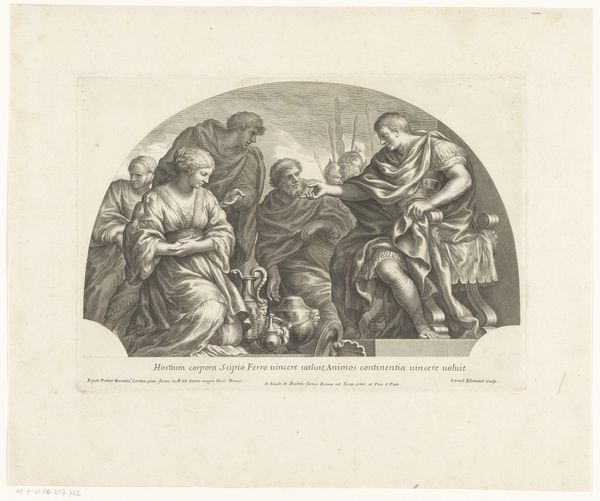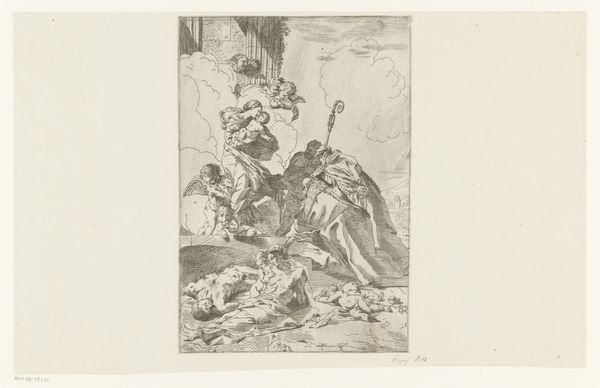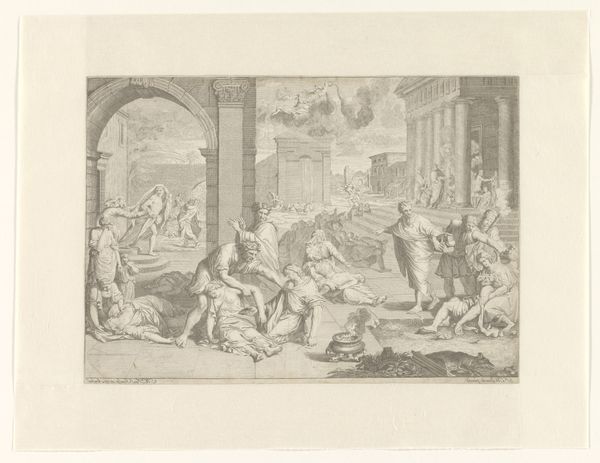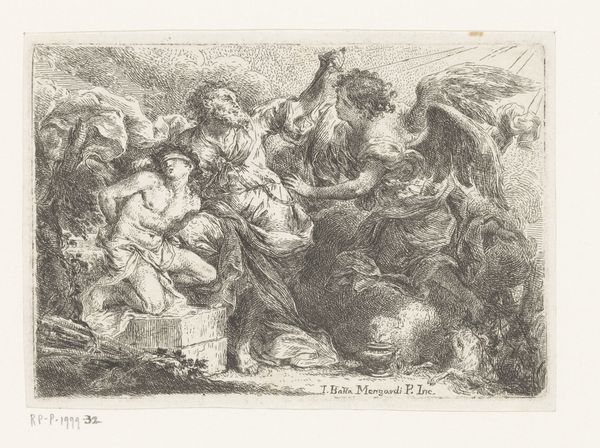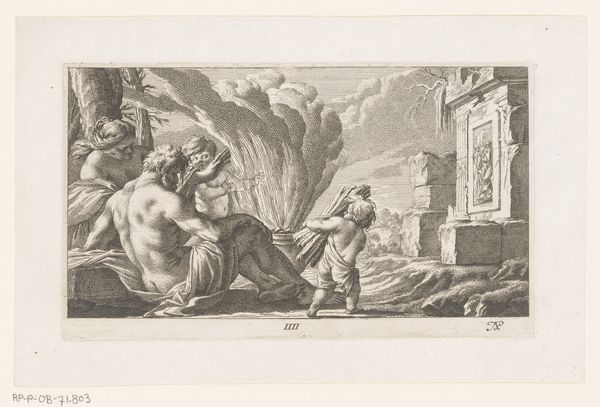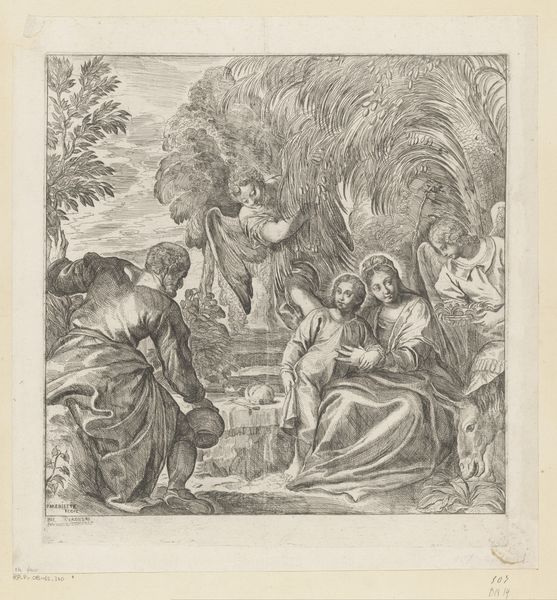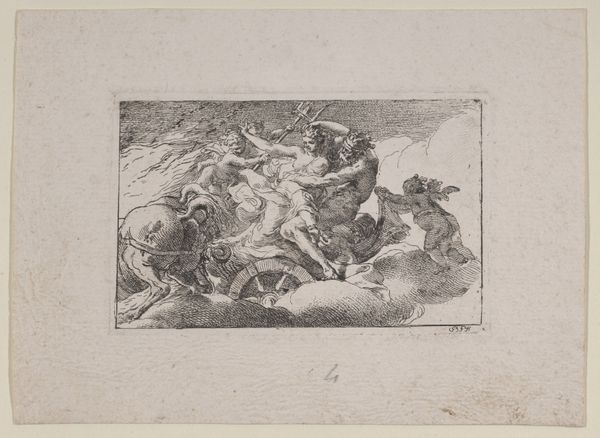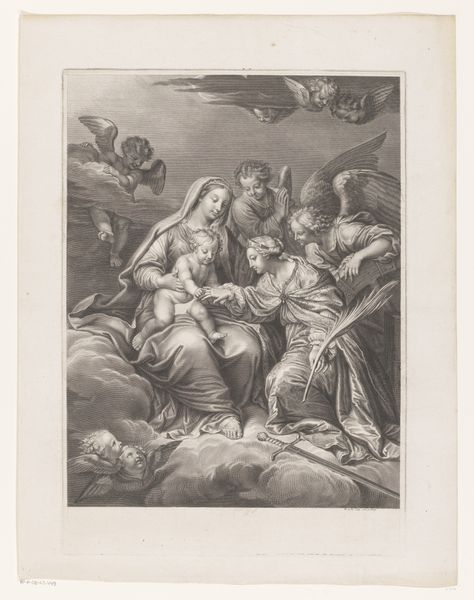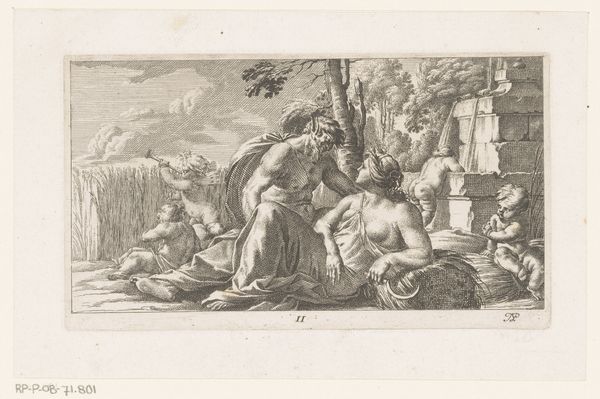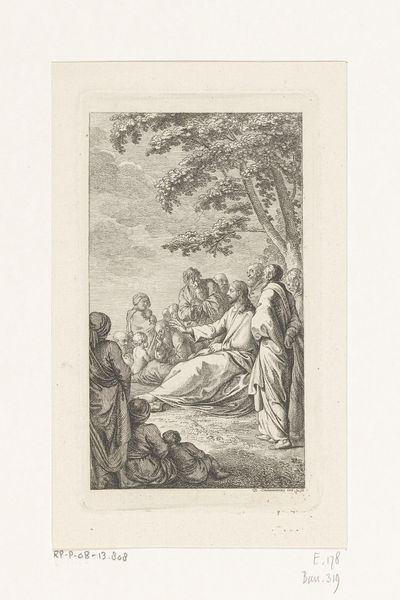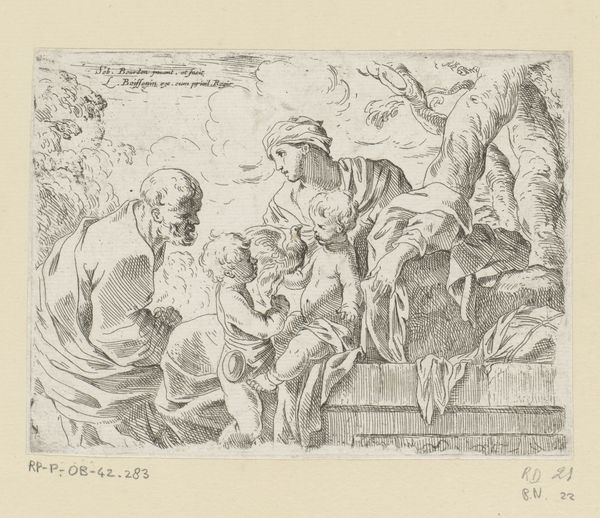
Maria met Kind, Johannes de Doper, Elisabeth en engelen 1623 - 1672
0:00
0:00
print, engraving
#
baroque
#
ink paper printed
# print
#
old engraving style
#
figuration
#
line
#
history-painting
#
engraving
Dimensions: height 205 mm, width 264 mm
Copyright: Rijks Museum: Open Domain
Curator: This engraving by François Chauveau, dating sometime between 1623 and 1672, is titled "Maria met Kind, Johannes de Doper, Elisabeth en engelen"—that is, "Mary with Child, John the Baptist, Elizabeth and Angels." What's your initial take on it? Editor: My first thought is a delightful sense of chaos, actually! It feels almost like a Renaissance take on a crowded daycare. All those chubby cherubs jostling for attention! Curator: Exactly! Baroque art often uses a flurry of figures to signify the abundance of grace. Observe how the putti surrounding the Virgin echo classical representations of Cupid, but their sacred context infuses them with the essence of divine love rather than profane love. Editor: I see that now! And the way they're all sort of tumbling over each other… it almost humanizes them. It reminds me, oddly, of a puppy pile. There's definitely something comforting about that. It makes these grand religious narratives somehow accessible, relatable even. Curator: It’s a common thread in art. By localizing universal archetypes, sacred images speak to personal realities. Mary, John the Baptist, and Elizabeth appear to partake in a domestic scene, with Elizabeth traditionally interpreted to be Mary's older cousin. What about their rendering strikes you most, personally? Editor: How delicately Chauveau has drawn them all. The detail in the folds of the fabric is pretty mesmerizing—so many lines, giving depth and weight to everything, especially Mary's robes. They are certainly reminiscent of some grand sculptural figure. And the way he captures the softness of the children's skin with mere strokes is astonishing. Curator: The engraving technique is exquisite. The density of the lines determines value, creating contrasts to emphasize emotion and spirituality. Light becomes an agent of divine disclosure, gently embracing each blessed figure. Editor: It almost has the look of lace, which is an interesting choice when representing divinity. Makes me wonder, was he trying to humanize these figures even further? Give them a sense of everyday beauty rather than unreachable otherworldliness? Curator: Perhaps, or perhaps he's demonstrating that the divine is interlaced throughout the everyday! Art reveals itself when we allow it to meet us in the present. Editor: True. It definitely gave me a fresh perspective this time. Thanks for that!
Comments
No comments
Be the first to comment and join the conversation on the ultimate creative platform.
